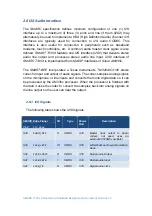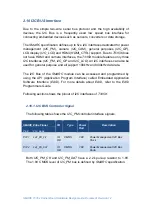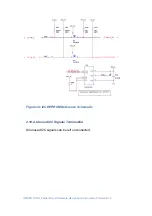
SMARC T335x Carrier Board Hardware Design Guide, Document Revision 1.2
2.7.2.2. EMI Protection
Common-mode chokes or LC filter are frequently used in automotive CAN
networks to increase system reliability with respect to
EMC
.
EMI
emitted
from an end device through the CAN transceiver can be filtered, thus
limiting unwanted high-frequency noise on the communication bus.
Another reason for using a common-mode choke or LC filter is attempting
to improve the susceptibility (immunity) of the transceiver to
electromagnetic disturbances on the bus.
While the above mentioned effects of the common-mode choke or LC filter
are beneficial, unexpected results can occur under certain conditions.
EMC susceptibility can be degraded in some frequency ranges, bus signal
integrity worsened, and extremely high transient voltages under
bus-failure conditions can be generated, which, in the worst case, can
lead to damage in the CAN transceiver and other network components.
2.7.2.3. Terminations
A High Speed CAN bus must be terminated at both ends with a
120 ohm
resistor between
CAN_H
and
CAN_L
. Improperly terminated cable runs
can work at speeds up to 125Kbps, but it is best to always terminate your
bus properly at both ends. This will allow for maximum data integrity at
high and low speeds.
2.7.2.4. Routing Considerations for CAN Interface
Follow differential routing guidelines. Length match between
CAN_H
and
CAN_L
should be +/- 100mil. See
SMARC T335X
layout guide for trace
routing guidelines and the
SMARC
specification for more information
about this subject.














































